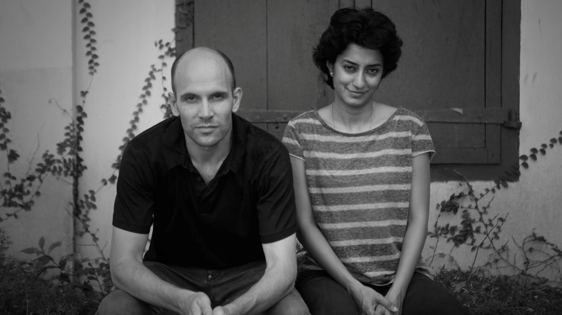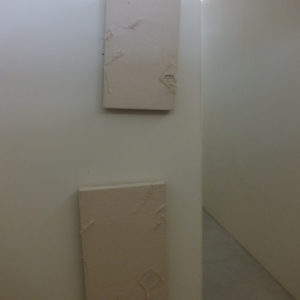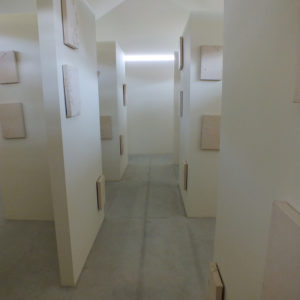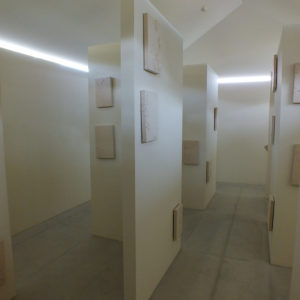Today, We’re starting our series of interviews for the Setouchi Triennale 2016… At last…. (yes, I know I’m a bit late, I was hoping to have some ready for the Spring session, but I’ve been busier than expected with too many things).
We’re starting with Pors & Rao, two artists whose work, called Someone’s Coming, was a great surprise for me – a pleasant one – as I really didn’t know what to expect and I assume it’s better to discover the artwork this way.
Ironically, what will follow (interview, pictures and video) will spoil it a little bit, so be warned. If you plan on seeing the installation on Shodoshima, you still can read the interview, but refrain from watching the video, maybe. If you won’t be able to make it, go ahead, watch. Although I kinda assume the installation is permanent, so who knows, you may be able to experience it in the future.
Can you tell us a little bit about yourselves?
We are Aparna and Søren and we have collaborated since 2004. We make work often conceived as a kind of ‘being’ with basic behavior patterns such as shyness, fatigue and dependency, highlighting absurd and involuntary aspects of human behavior and relationships. Some imply a kind of pre-conceptual way of perceiving the world, where emotions and thoughts are projected onto the things around us — as if everything was conscious.
How did you hear about the Setouchi Triennale?
The curator on Shodoshima, Noboru Tsubaki invited us to participate.
What made you want to take part in it?
Exhibiting on a deserted beach on a remote island in Japan somehow seemed perfect to us.
Did you get to choose the location where your artwork will be shown? If yes, what guided your choice?
We chose an old abandoned fishing shed on a beach on Shodoshima. The place was really magical, and we loved that it was very removed from everything else and that it is hard to get to, at the same time there seemed to be very strong traces of intense activity bottled up. The beach passage to the shed is inaccessible during high tide.
What can you tell us about your work for the Triennale?
We had an idea of these empty canvases whose only state of being is to wait for someone to come; perhaps to look at them, or make them an image, or as a preconscious entity to be born in someone’s mind. As the shed is accessible only during low tide, we thought this idea of waiting for someone to come was quite fitting for this abandoned space. Inside the installation appears as a pristine, maze-like gallery with blank canvases hanging around the edges of the walls. They have these cartoonish patches and repair-work, as if they have been around for a while, and when someone enters the space, they peek around the corner to see what’s coming. If you stand in front of a canvas it doesn’t move, but canvases around the nearest corners will peek out. This creates restlessness in the space where one’s attention is continuously drawn towards what is around the next corner.
Thanks a lot to Pors & Rao for this interview (as well as to Sunitha who was my liaison)
And a short video I shot last week when I returned a second time (spoiler warning):
[iframe width=”853″ height=”480″ src=”https://www.youtube.com/embed/vbiGD_SFZk8?rel=0″ frameborder=”0″ allowfullscreen]
Someone’s Coming is the artwork number 78 of the Setouchi Triennale 2016. It is located near Ikeda Port (10-15 minutes walk along the shoreline). It’s open from 9.30am to 5pm. Entrance fee is 300 yens without an Art Passport. It is open every day during the Triennale.
Credits: Thanks to the Kochi-Muziris Biennale Foundation, India for providing the picture of Pors & Rao.




One of my favourite artworks on the island. Will definitely visit it again on my next trip in 3 years. Thinking to enter from Ikeda and do a Mito Hanto tour by car.
I still don’t know if Someone’s Coming is permanent, but it’s gotta be.
Yes, car is almost the only way to visit Mito Hanto.
However when we went in July, there was a free “taxibus” that drove us around the tip of the peninsula.
Based on how well the building was made, I can see it being permanent. I’d be more surprised if it wasn’t.
I heard about the “taxibus” or “shuttle” when I was in Hishionosato, or maybe Sakate. There was information but since I had no plans to go, I decided not to bother looking at the information.